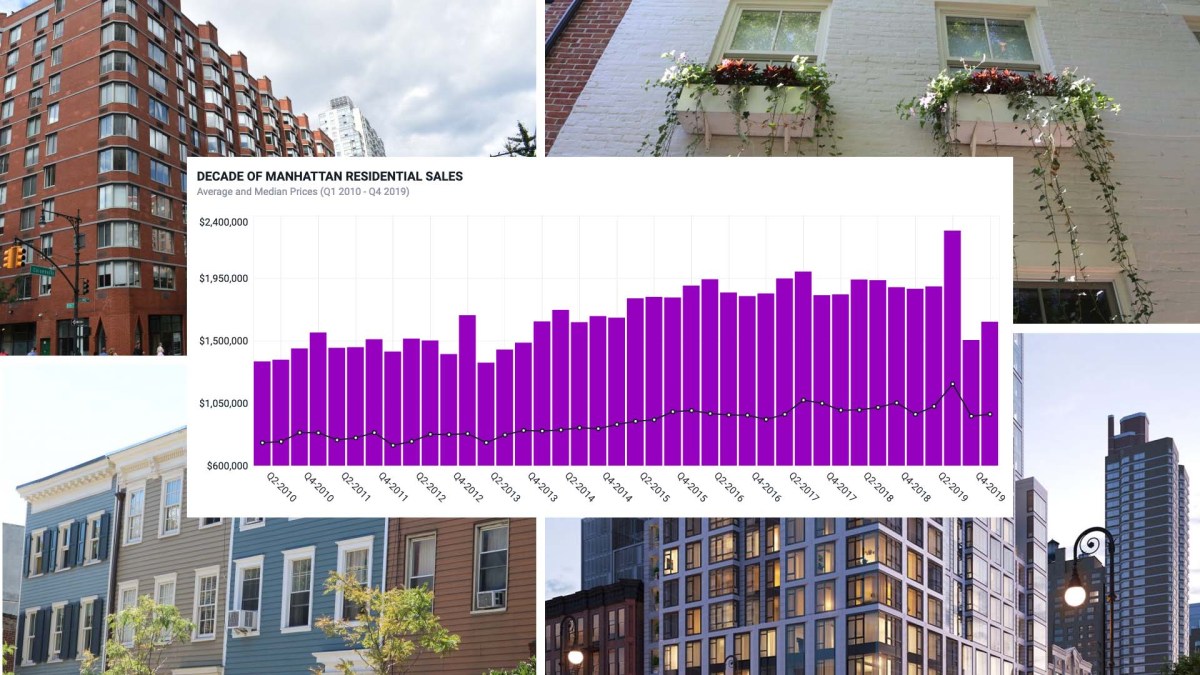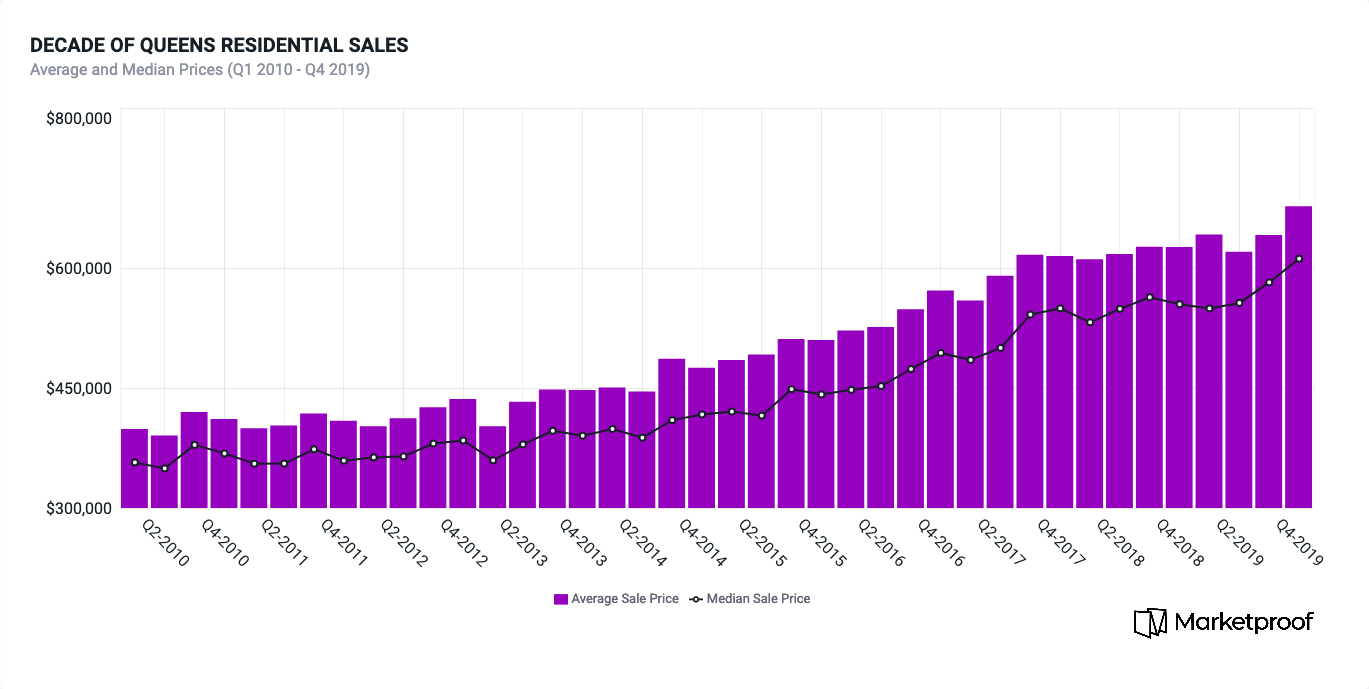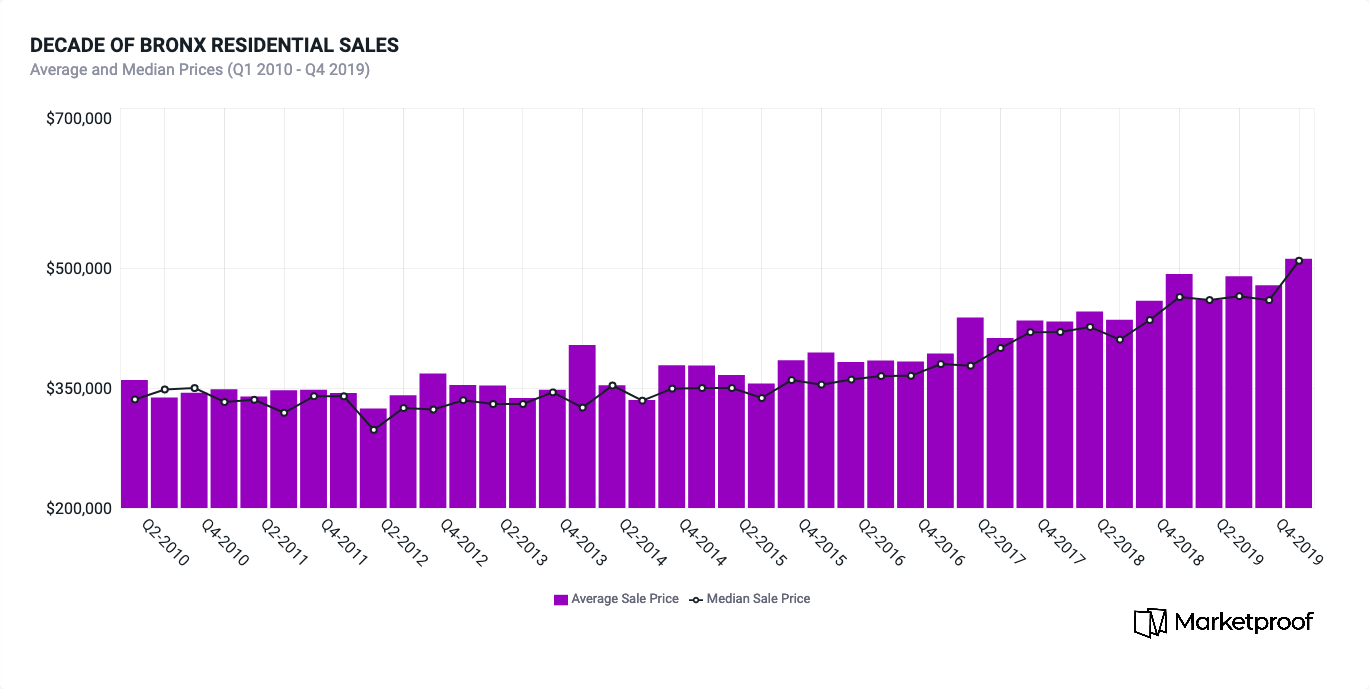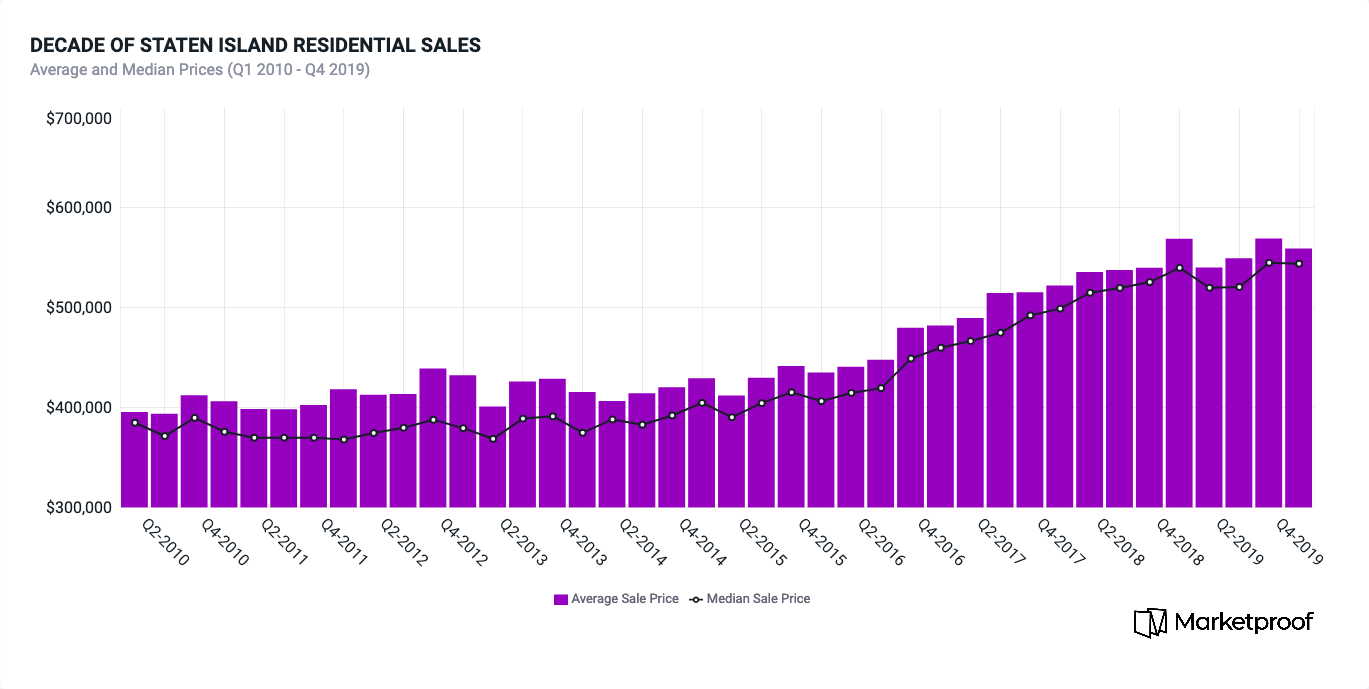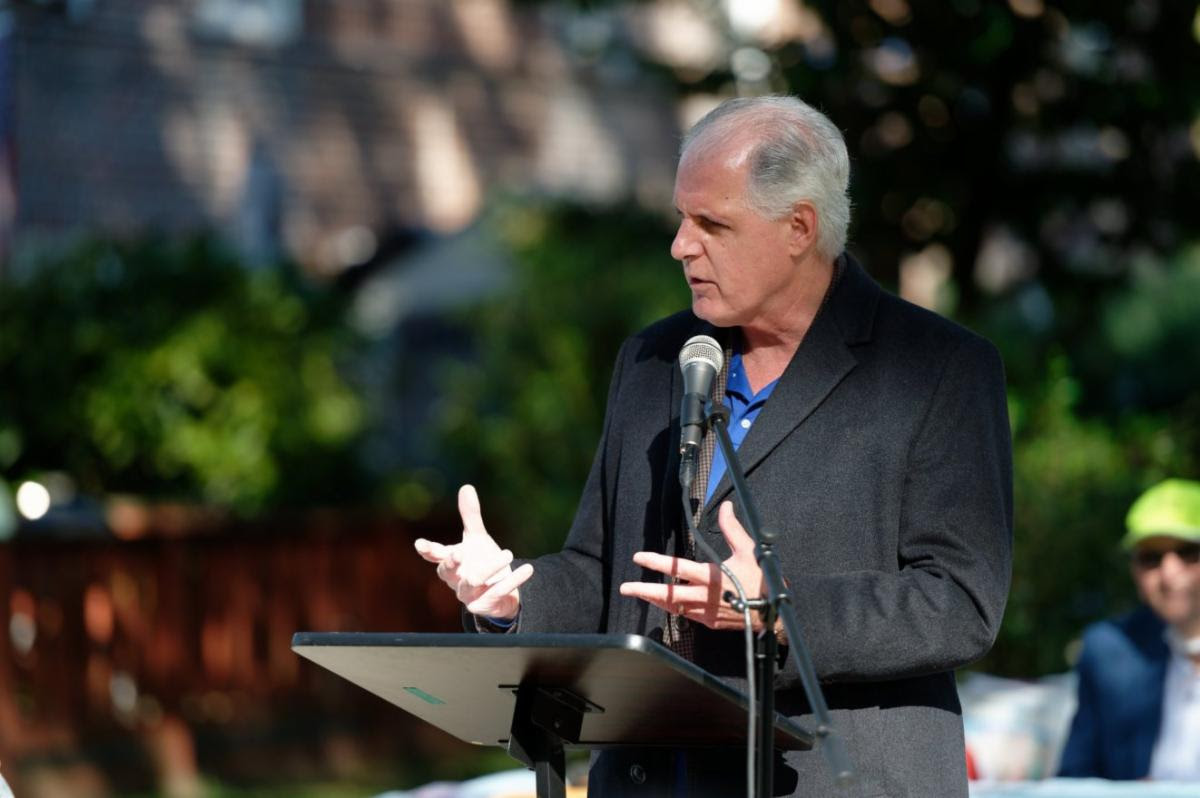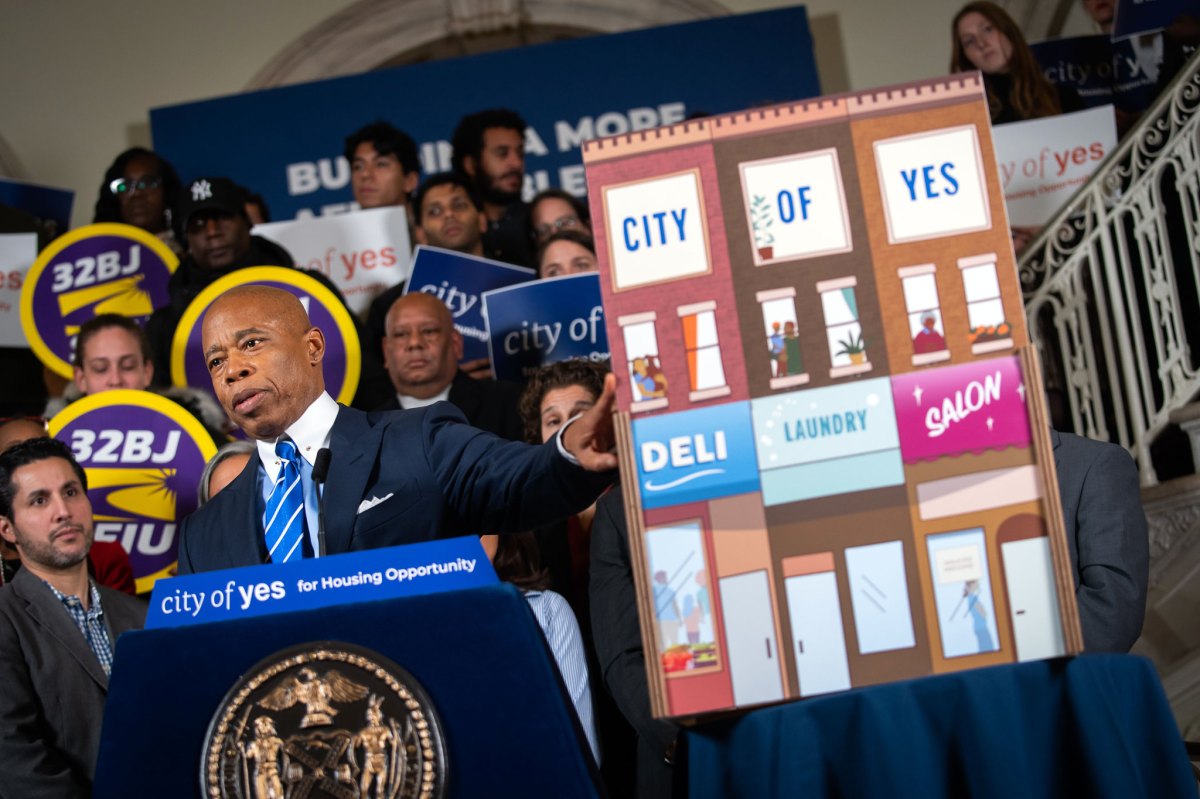The real estate data is in, the decade analyzed, and the message is this:
Real estate prices in NYC went way up in all five boroughs. Since 2017, prices have flattened, and in some places, especially in Manhattan, retreated.
Manhattan
In Manhattan, prices grew steadily for the first seven years of the decade. In 2017 and 2018 they began to sour as the state and local tax deduction cap (SALT) had many buyers zipping their wallets shut, and in 2019, with the introduction of the new mansion tax, zipping their wallets tight. At the ultra high end, buyers of new condos padlocked their wallets shut. According to broker and market analyst Donna Olshan, for new condos priced over $4 million, 35% fewer went into contract in the last three months of 2019 compared to 2018.
Throughout the decade, Manhattan continued to grow its stock of well-paying jobs. But, as with many cities, the cost of housing outpaced income growth and some people decided to move-on, or make their way across the East River to Brooklyn.
The NYT summed up 2019 like this: “There were highs and lows for New York real estate this year. Sales records were broken, but the overall market hit the brakes, even as mortgage rates stayed low. Design took center stage in many new developments, and Hudson Yards opened to great fanfare.”
(Click to expand chart)
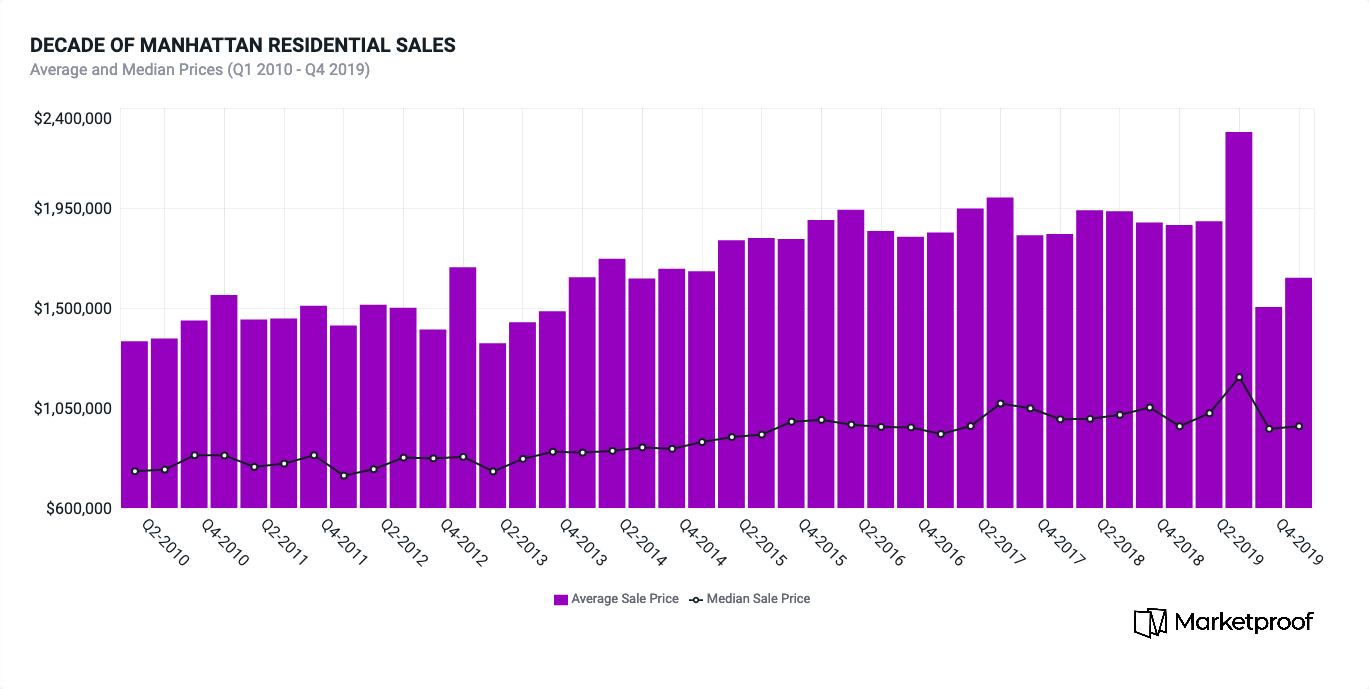 Brooklyn
Brooklyn
Over the decade, Neighborhoods like Williamsburg and DUMBO were fundamentally transformed. Brooklyn’s position as a global brand solidified, with the number of businesses named Brooklyn spreading across the globe. This, in combination with the fact that the mansion and SALT taxes don’t come in to play as much in Brooklyn as in Manhattan, kept prices more stable than Manhattan’s. While transaction volume was down, average and median prices flattened but overall didn’t retreat.
Brooklyn is also NYC’s largest boro, with over 2.5 million residents, and while the riverfront neighborhoods saw the most visible changes, other areas of Brooklyn, like Bed-Stuy and Bushwick and many others also saw remarkable changes as condos proliferated the allure of owning brownstones and townhouses attracted both local and global buyers.
Curbed writer, Jeff Andrews, summed it up like this: “The blossoming luxury market in Brooklyn is one of the biggest developments in New York City housing in the 2010s.”
(Click to expand chart)
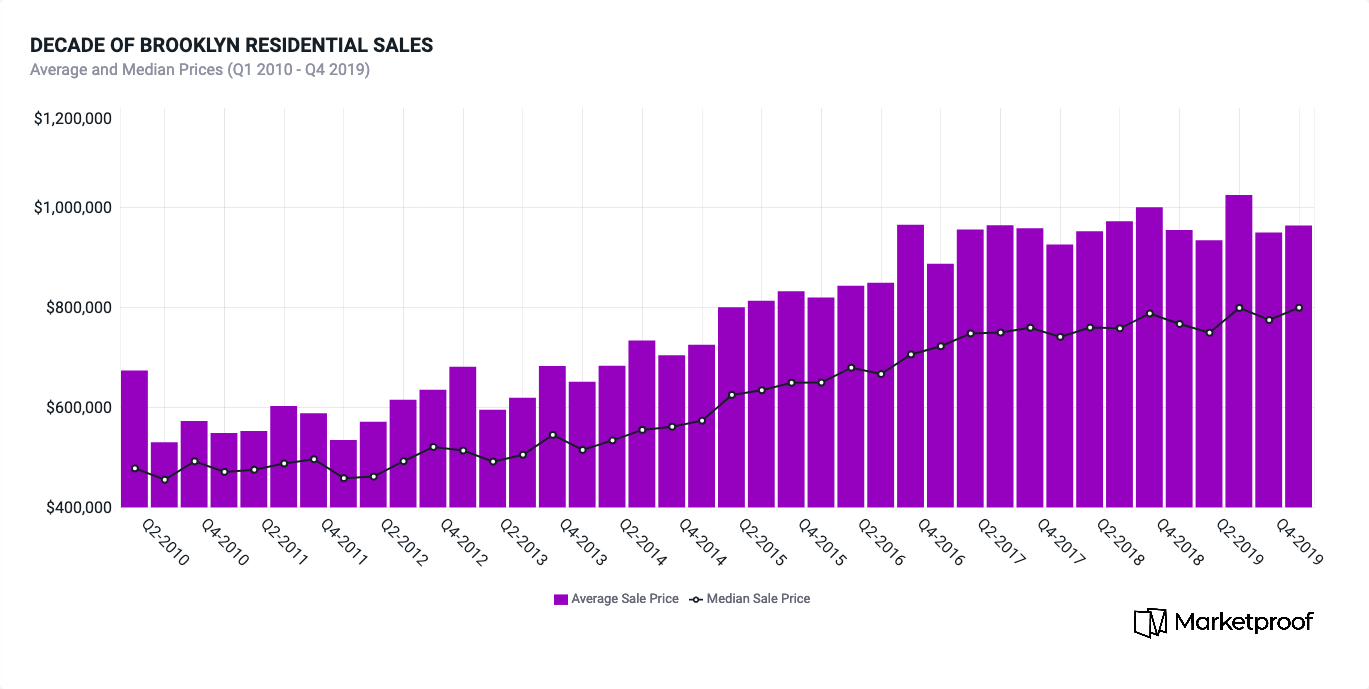 Queens
Queens
Over in Queens, with proximity to midtown Manhattan and shiny new condos along the waterfront, people took refuge from Brooklyn’s price increases. Queens prices continued their rise without a hiccup. With average prices well below the mansion tax levels and loans with modest interest rates widely available, comparative affordability in Queens was obvious to many.
The 7 train subway line became one of the most overcrowded in the city as home sales and property prices soared in neighborhoods such as Sunnyside, Woodside and Jackson Heights. Astoria too enjoyed appreciation and population migration due to accessibility to Manhattan via subway.
Although Amazon ultimately decided to pull out of plans to locate their seismic HQ2 in Long Island City, the initial decision to go there clearly delivered publicity for the borough. Much of Queens is still less pricey than Brooklyn and though it lacks the glamor of brownstones and celebrities, large scale development means the following decade will see its reinvention continue.
(Click to expand chart)
The Bronx
The Bronx also saw increases, albeit more modest than in Brooklyn or Queens, but once unimaginable to long term residents. Neighborhood bodegas gave way to exposed brick wall coffee shops and talk of a Piano District in the South Bronx. Norwoodnews.org stated, “Between 2010 and 2017, the Bronx became the fastest growing county in New York State, with over 86,000 new residents, bringing the estimated population to around 1.5 million.”
(Click to expand chart)
Staten Island
Hit hard by Hurricane Sandy in 2012, Staten Island rebounded and benefited from the high-priced Manhattan and Brooklyn spillover in the first half of the decade. Luxury rentals and condos helped the borough keep pace.
According to a 2017 post on the Staten Island Board of Realtors’ website, homes had reached “unaffordable levels” at a time when there were fewer homes on the market than buyers who wanted to purchase them.
(Click to expand chart)
Disclosure: Marketproof powers the real estate listings for Brownstoner, a publication of Schneps Media, which is the parent company of amNewYork.



